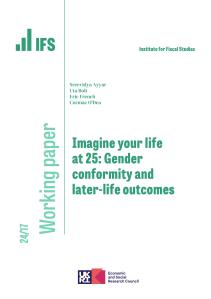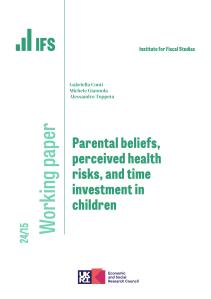Child Benefit was for a long time universal, in recognition of the extra costs that children bring whatever the family’s income.
In 2013, under the pressures of austerity, the coalition government was finally persuaded by the same logic that had proven irresistible to previous governments for so many other benefits. It chose to focus scarce resources on those with lower incomes.
Well, sort of. The “High Income Child Benefit Charge” is a highly irregular way of making a benefit income-related. Formally it is an increase in tax, paid by the highest-income parent in the household. It kicks in when their income rises above £50,000. It is phased in at a rate such that, once income reaches £60,000, the charge is equal to the amount of Child Benefit the family gets, at which point it caps out. In other words, it’s a roundabout way of clawing back Child Benefit.
A few things about this are either unusual or weird or both (some things that governments do are weird but not unusual).
First, that parent gets a very arbitrary-looking spike in their income tax rate, and one whose size depends on how many children they have. For example, someone with three children can currently face an income tax rate of 69.1% on income between £50,000 and £60,000. Above that the rate reverts to the headline higher rate of 40%.
Second, those income thresholds have remained fixed since the policy was brought in over a decade ago, dragging many more families within scope. The proportion who lost some or all of their Child Benefit was 13% in 2013 but has doubled since then. Freezing thresholds for long periods has become commonplace, but never makes sense. If the thresholds were the appropriate ones originally, then why allow their real value to be eroded.
These thresholds are increasing in the new tax year that starts next week. From then, families will keep their Child Benefit until one of the parents crosses £60,000. This means that the proportion of families affected by the clawback in the coming year will reduce to 22%, when it would otherwise have hit 30% - a difference of 600,000 families. The charge will also be phased in at half its current rate, meaning that the benefit will not be fully paid back until said parent crosses £80,000.
Third, the withdrawal is based on the income of one particular adult within the family (who may or may not be the member of the family that Child Benefit is paid to). Cue inevitable comparisons between a couple on £100,000 between them, who keep all their Child Benefit if their income is equally split, and a one-earner couple on £60,000 who lose all of it. From April those numbers will become £120,000 and £80,000 respectively, but the point remains.
The government now finds this point more concerning than it did in 2013. It has signalled an intention to base the clawback on family income after all. It can’t do this now, for the same reason that it couldn’t do it in 2013: having implemented this policy via an income tax charge, it runs into the problem that we have an individual income tax system. HMRC’s database does not link partners. It will now seek to change that. Those who fought for individual income taxation, and who won that battle in 1990, may be displeased.
Administration might not be the only difficulty. Because the current system is much kinder to couples whose income is evenly split, rebalancing that would – unless the total cost of Child Benefit is increased – mean lots of losers relative to the status quo. For example, what if the family income thresholds for two-parent families are set so as to leave the cost of the system unchanged? About 550,000 couples would gain (couples in which one parent earns significantly more than the other), and about 550,000 two-earner couples would lose. Losers tend to be vociferous, but for every winner not accompanied by a loser the taxpayer will pay more. Important choices lie ahead and they won’t be easy.
We used to have a universal Child Benefit, alongside means-tested welfare based on family income. One might have thought that the ability to tinker with those two forms of support - one income related, one not - would have been enough flexibility, and that introducing an entirely new, and rather strange, administrative apparatus was unnecessary. But it looks like we’re stuck with it, and that additional contortions will be added to try to unpick the mess.
This is harder than it needed to be: the sort of endless pickle that often follows one initial misjudgement. Status quos can be hard to change, no matter how incoherent they are.
This article was first published in The Telegraph, and is reproduced here with kind permission.










